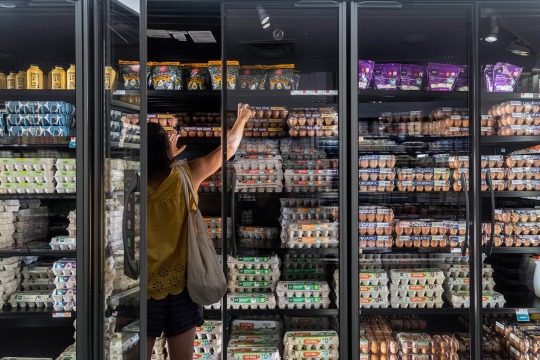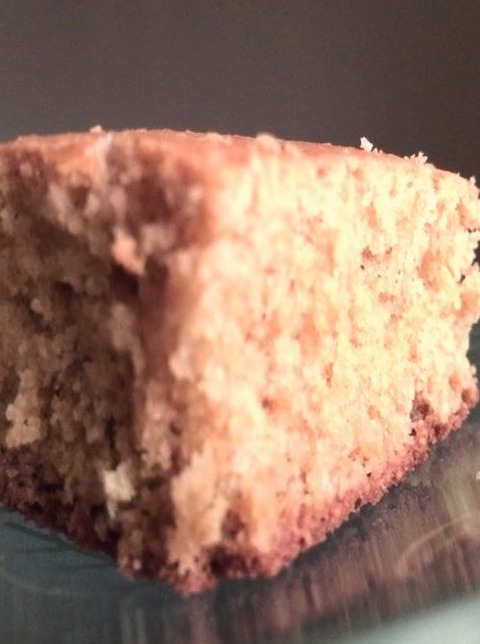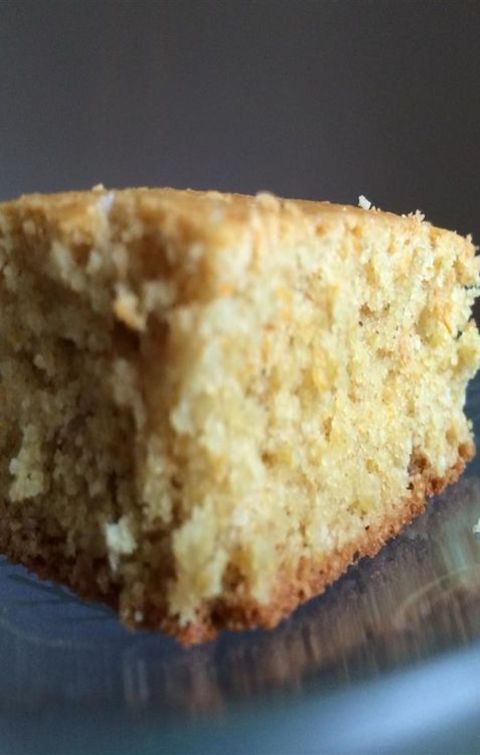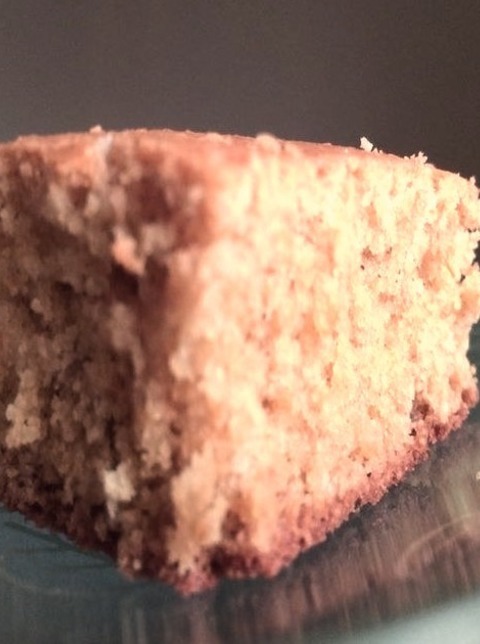#Non-GMo
Photo

Amazingly Healthy KALE Mix Seeds , Organic, Heirloom, Open Pollinated Non-Gmo B25 Kale is a member of the brassica family and a cold-tolerant, easy-to-grow, highly nutritious green. Kale may be the hardiest of the cabbage kin. It excels in cold weather, tasting best after frost has kissed the tender, succulent, superfood leaves. This mix is the rare, flavorful kale variety you will want to grow in your garden. Convert your garden to an epic garden. You can even use these hardy green veggies as ornamental flowers and still benefit from their green leaves all spring, summer and autumn long till December actually. Able to withstand frost and cold climates, kale often symbolizes the coming winter season. Is there any dish that can't use a flavor and nutrient boost from kale? This blend of amazing healthy kale mix provides a variety of colors, textures, sizes, and flavors. Harvest baby greens in just 25 days and allow some plants to grow to maturity. This frost-hardy crop is a rock star in the garden even as other vegetables are winding down. Count 25 Botanical Name: Brassica oleracea and B. napus Days to Maturity: 25–55 days Days to Germination: 3-10 Seeding Depth: 1/2" Plant Spacing: 12-18" Row Spacing: 24" Plant height: 12-18" Growth Habit: Leafy upright Soil Preference: Nitrogen-rich, loamy, well-drained Temperature Preference: 45-70 °F Light Preference: Full sun - partial shade Pests and Diseases: No serious diseases but monitor regularly for aphids, cabbage worms, flea beetles, and thrips. Hardiness: Biennial grown as an annual, kale is very cold hardy, and may overwinter in milder climates. Plant Dimensions: If left to grow to maturity, the varieties in this mix will get up to 4' tall, but for baby greens should be picked at 2"–4". In the spring, sow seeds 8-10 weeks before the last frost. For fall harvest, sow seeds directly from July-September for a late fall crop that will taste super sweet after a bit of frost exposure. Kale requires good moisture and full sun. Set plants out or thin to 12- 18 inches apart. Plant seeds ¼ deep. Ideal germination temperature is 45-85 F. Germinates in 6-9 days. Heirloom NON-GMO, Perennial, Easy to Grow, Rich Flavor Attracts Pollinators Attracts bees and butterflies Repels pests Aromatic Kale is believed to be more similar to the original wild cabbage ancestor than more refined brassicas like cauliflower and Brussels sprouts. It hails from the eastern Mediterranean, as well as Asia Minor. The ancient Romans were responsible for dispersing kale and collards to Europe where they were quickly embraced as a cold-loving crop perfectly suited to the Northern European climate. Most people would choose something sweet over something green any day of the week. But if you’re looking to improve your diet or perhaps drop a few pounds, the more cruciferous vegetables you eat, the better. And if you’ve yet to discover kale, it’s time to give this green, leafy superfood a try — not only because of its low calories but also because of the health benefits you’ll receive. USES: Many culinary uses Kale is a perfect beginner gardener’s crop, and it requires very little care to thrive. Kale can tolerate an impressive amount of cool weather. In mild climates, it can be grown year-round, perhaps with a lull in the punishing heat of summer. In cooler climates, kale is considered one of the best crops for season extension. With a bit of protection, it can be grown late into the fall. PESTS/SPECIAL CONSIDERATIONS In some areas, cabbage worms will wreak havoc on all cabbage relatives. Try a clove of homemade garlic and hot pepper spray to discourage these pests from munching your plants. Seeds are not individually packaged according to variety but are packaged in one envelope for this listing, please see other listings for individual varieties. We do NOT make any claims that you will receive all seed varieties since we have no way of knowing which are which. We do not guarantee that you will get all varieties since we have mixed them all and packed them randomly. Varieties based on their seasonal availability may change. Species may also be included in the mix (Pre-Mixed and randomly packaged): A Blend of BLUE CURLED SCOTCH KALE, CASPER KALE, DAZZLING BLUE KALE, DWARF SIBERIAN KALE, JAPANESE FLOWERING KALE, DWARF BLUE CURLED, DWARF SIBERIAN IMPROVED', NERO DI TOSCANA, NERO TOSCANA' LACINATO, RED URSA KALE, RUSSIAN RED OR RAGGED JACK KALE, SCARLET KALE, THOUSANDHEAD KALE, TRONCHUDA KALE, Scarlett Kale, Tronchuda Kale, Abundance Kale, Lacinato (Dinosaur) Kale, Red Russian Kale, Siberian Kale, Gai Lan, Walking Stick Kale, Curly Kale, Chinese Kale / Gai Lan, Redbor Kale / Purple Kale, Red Russian, Scotch Kale, Salad Savoy, Portuguese Kale, Ornamental Kale, Abundance Kale, Hoj Amager Grunkohl (DK), Madeley (UK), Westphalian (UK), Westland Winter (UK), Westländer Winter (DE), Asparagus Kale (IR, UK), 1,000 Headed kale (DE), Roter Krauskohl (DE), Altmarker Braun (DE), Baltic Red (SE), Blonde Butter of Jalhay (BE), Butterkohl (DE), Nicki’s Cut’N’Come Again (IE), Shetland (UK), Hellerbutter Kohl (CH), Cavolo Nero di Toscana (IT), and Ostfriesische Palm (CH) and much more... FREE GIFT when you order 5 items or more. Free gift is full of surprise seeds which may include single or mixed varieties. Note: For Free shipping orders, no tracking # will be provided to make the shipping cost-effective for us and free for you. Returns & exchanges are not accepted. But please contact me if you have problems with your order Our seeds are guaranteed to germinate. Once the seeds have sprouted, please understand that we cannot be held responsible for the many uncontrollable growing and climatic conditions that must be met to ensure the success of your crop(s). I try my best to make my buyers happy and would appreciate it if you'd contact me first if you have any questions or problems with your order. If you open a case before contacting me first, I will automatically block you from future purchases. Thank you for your understanding. SOWING INFO When to Sow Outside: 1 to 2 weeks before your average last frost date, when soil temperature is above 45°F for spring/summer crop; 10 to 12 weeks before your average first fall frost date for fall crop; and in mild climates, fall for very early spring crop. When to Start Inside: RECOMMENDED: 4 to 6 weeks before your average last frost date. For a fall crop, start 12 to 14 weeks before your average first fall frost date, transplanting after 4 to 6 weeks. Ideal soil temperature for germination is 65°–85°F. Days to Emerge: 5–10 days Seed Depth: ¼" Seed Spacing: A group of 3 seeds every 18" Row Spacing: 24" Thinning: When 1" tall, thin to 1 every 18" HARVESTING Harvesting: Outer leaves can be harvested as baby greens when 2"–3" tall, any time when full-sized beginning with the lowest, or the whole plant can be cut off at ground level at maturity. For fast regrowth, harvest up to only ⅓ of the plant at a time. The Health Benefits of Kale -------------------------------------- Lowers the Risk of Heart Disease - The potassium in kale may help promote heart health by reducing your risk of heart disease and stroke Helps Prevent Cancer - contains potential cancer-fighting properties Aids in Protecting Eyesight - contains the vitamins lutein and zeaxanthin, which contribute to healthy eye cells and help lower the risk of age-related macular degeneration. Promotes Healthy Blood Clotting - Vitamin K plays a role in healthy blood clotting, and people with a deficiency may experience slow clotting time. Helps With Weight Loss - Because kale is low in calories and high in water, it’s an excellent food for weight loss. Improves Skin Health and Appearance - This vegetable doesn’t only improve your waistline and help reduce the risk of certain illnesses, it can also improve your skin. Contributes to Healthy Blood Sugar Levels - Manganese is a trace mineral in kale that may decrease insulin resistance, the hallmark of type 2 diabetes, and help people with type 2 diabetes maintain healthy blood sugar levels http://springsofeden.myshopify.com/products/amazingly-healthy-kale-mix-seeds-organic-heirloom-open-pollinated-non-gmo-b25
#Organic#Heirloom#Non-GMo#kale seeds#Lacinato Kale#Tronchuda Kale#Red Russian Kale#Siberian Kale#Gai Lan#Walking Stick Kale#Portuguese Kale#Ornamental Kale#Redbor Kale
2 notes
·
View notes
Text

Research shows that consumers are willing to pay an average of 58 to 92 percent extra for organic over conventional produce and nearly 200 percent more for products like eggs. But some experts say the difference in food safety and nutritional value is negligible between organic and conventional products. Photograph By Hiroko Masuike, The New York Times/Redux
Health Food Packaging Buzzwords Are Confusing. This Guide Can Help.
We Wxplain the Difference Between Organic, Non-GMO, and Certified Naturally Grown—and Whether They're Worth Paying a Premium For.
— By Leah Worthington | March 13, 2024
Grocery shopping can be a dizzying experience these days.
If choosing among a dozen different yogurt flavors wasn’t overwhelming enough, there’s also the growing, confusing list of buzzwords on packaging labels. Is there a nutritional difference between organic Greek and regular? Is naturally grown healthier? What does it even mean for yogurt to be bioengineered?
While ostensibly created to educate consumers about how food is grown or processed, excessive labeling can have the opposite effect.
“Food labels can be very useful. And I'm saying ‘can be’ because sometimes they're not,” says Ariana Torres, an agricultural economist and associate professor at Purdue University. The problem, she says, is that too much information can muddy the waters—making it harder for consumers to determine what labels actually mean and distinguish real certifications from empty marketing.
Food marketing experts weigh in on the most common food labels to demystify the claims and help consumers make educated choices about whether to pay the premium.
Organic
The term “organic,” which was first used in reference to farming in 1940, has come to describe a multi-billion dollar industry that represents nearly 6 percent of all retail food sales in the United States. And market research has shown that, while price premiums have fluctuated over the years, they’re generally trending upwards, with consumers willing to pay an average of 58 to 92 percent extra for organic over conventional produce and nearly 200 percent more for products like eggs. But what does organic mean, exactly?
Organic encompasses a broad spectrum of factors, from soil quality to pest control and use of additives, according to the United States Department of Agriculture (USDA), which regulates the market through its National Organic Program (NOP). For a product to receive the ubiquitous green “USDA Organic” label, it must meet a long list of requirements for growing, processing, and handling. At least 95 percent of a product’s ingredients must be organic to be certified.
Broadly speaking, organic products are guaranteed to be grown without synthetic fertilizers and pesticides, contain no artificial preservatives, colors, or flavors, and are produced without certain prohibited practices, such as genetic engineering. The term genetically modified organism (GMO) describes any plant, animal, or microbe whose DNA has been changed through the use of technology. All organic products are GMO-free, though not all non-GMOs are organic.
Organic farmers are also required to use methods that “foster resource cycling, promote ecological balance, maintain and improve soil and water quality, minimize the use of synthetic materials, and conserve biodiversity,” according to the USDA.
Kathleen Glass, associate director of the Food Research Institute at the University of Wisconsin-Madison, describes purchasing organic as “a lifestyle choice,” adding that there’s no evidence that organic is more microbiologically safe than conventionally grown foods. Compared with 50 years ago, she says, the amount of pesticides and herbicides allowed on food are well below levels that could cause long-term health impacts.
Robert Paarlberg, an associate in the sustainability science program at the Harvard Kennedy School, says that there’s “no convincing evidence” that organic products are better than conventional from a nutritional or food safety perspective.
“Certified Organic does not mean much from a nutritional standpoint,” says Walter Willett, a professor of epidemiology and nutrition at Harvard. While organic products will have lower levels of pesticides and herbicides, he says that the health benefits of that are still unclear. “If the cost is similar, I would suggest the organic option, but for those on a limited budget, eating plenty of healthy foods would be more important,” he says.
Certified Naturally Grown
Consumers wanting to steer clear of synthetic chemicals and genetic engineering might also look for the “Certified Naturally Grown” label—and should be aware that any product claiming it’s “naturally grown” is not quite the same.
Though the standards are essentially the same as organic, the verification process differs slightly, says Alice Varon, executive director of Certified Naturally Grown, the independent nonprofit and certifier. “Certified Naturally Grown means that the food was grown without synthetic inputs or GMOs and that the practices of the farmer were verified through a peer-review inspection process.”
Founded and run by farmers, Certified Naturally Grown was created as an alternative for growers and producers intimidated by the “onerous,” national organic verification process, Varon says. Unlike organic, the CNG label implies locally grown and primarily covers minimally processed or non-processed foods like fresh produce, honey, sauerkraut, and salsa.
Whereas terms like “all natural” and “free-range” have no formal definition and can be used as an unverified, unregulated marketing ploy, Chris Berry, associate professor of marketing at Colorado State University, says that CNG—and other government or third-party certifications—are “something that consumers can rely on.”
Still, there’s always a margin of error, according to Varon. Unlike GMO certifiers, the CNG doesn’t conduct post-production lab testing, so cross-pollination with nearby conventional GMO corn fields, for instance, could potentially go unnoticed. “It’s entirely possible that there’s some contamination,” she says, adding, “That’s the nature of the food system.”
Non-GMO and Bioengineered
While there’s widespread agreement that GMOs are as safe as any other foods, many consumers still want to know which is which. Though only a handful of GMO crops are grown in the U.S., several—including corn, soy, and sugar beets—are major players in the food market, both as ingredients and as feed for livestock.
One way to tell the difference is to look for products with the Non-GMO Project Verified label. The private nonprofit certifies goods free from organisms modified through any form of biotechnology. That means that, in a bag of non-GMO chips, not only must the potatoes be free from GMOs, but also any processed ingredients, like the canola oil used to fry the potatoes into chips.
While the Non-GMO Project sets the standards and makes the final certifying determination, independent companies conduct the actual genetic testing. These contractors use a lab technique called polymerase chain reaction (PCR) to test for the presence of genetically modified materia in DNA, says Hans Eisenbeis, the director of mission and messaging at the Non-GMO Project. To put it simply, he adds, they’re looking out for products that “can’t occur in nature and can only occur in a lab.”
Per Non-GMO Project standards, certain “high-risk ingredients,” like apples and canola, are allowed to contain a small percentage of genetically modified material.
“Contamination happens,” Eisenbeis says. Still, if you see the label, he adds, “you can be really confident that you are meaningfully avoiding every GMO that a human being can avoid.”
The USDA regulates a similar, but inverse label—bioengineered—to identify foods with a detectable amount of genetically modified material. The Non-GMO Project defines GMOs broadly and includes genetic modifications used at any point during food production. The federal designation, on the other hand, is much narrower. Bioengineered uses a higher threshold for contamination and excludes processed foods made from bioengineered crops with undetectable amounts of modified genetic material.
From a nutritional standpoint, there is no difference between GMO and non-GMO foods. However, Non-GMO Project certification could help justify manufacturers in raising product prices, which also reinforces—as premiums often do—the idea that the non-GMO option is somehow better. Recent studies have shown that non-GMO foods can cost anywhere from 10 to nearly 75 percent more.
Labels can often be a “marketing tool” more than anything else, Torres says. “We need to educate consumers…because some labels actually don't have a real value or added value to a product is just a label.”
While consumers may prefer to eat non-bioengineered foods, a USDA spokesperson emphasizes that the label is meant only as “a marketing standard and does not convey information about the health and safety of foods.”
#Organic#Non-GMO#Healthy Food#Health Food Packaging | Buzzwords#Help & Guidelines#Eggs 🍳 🪺 🥚🥚#Food Safety | Food And The Environment | Environmental Organizations| Food Culture | Food#Difference Between | Organic | Non-GMO | Certified Naturally Grown#Non-GMO | Bioengineered#Confused Consumers
0 notes
Text
#Clinically Proven#Natural Ingredients#Fat Burner#Appetite Suppressant#Metabolism Booster#Thermogenic Formula#Non-GMO#Vegan-Friendly#Gluten-Free#Made in USA
0 notes
Text
Bread - Gluten-Free Sweet Corn Bread

This white cornmeal-based sweet, straightforward, and moist gluten-free cornbread comes together quickly and easily, making it ideal for a gluten-free diet.
0 notes
Text
FutureCommPR Talks with Bridget Ludy of Chocolates for Diabetics
Introducing a Sweet Solution for Health-Conscious Indulgence this Christmas Season
Sometimes, a significant life event can serve as the catalyst for a new direction in life. In January 2018, Bridget Ludy was struck by a flu-like virus, marking the beginning of a prolonged physical ordeal for her. As the effects persisted, her health situation intensified and in August of that same year she was hospitalized. Subsequent comprehensive testing revealed a diagnosis of a rare form of Diabetes. Enduring almost two weeks in the ICU and not expected to survive, she emerged from this critical phase fueled by a renewed mission and sense of purpose. Her mission was to create a new company called Healthful Chocolates.
Her four-decades long career as a Chocolatier provided the experience that was needed for that new mission - to create a premium sugar-free gourmet chocolate because she simply could not give up chocolate herself. She worked to create “Chocolates for Diabetics” launching officially in January 2024 but already seeing major success with pre-orders via phone during the current Christmas season soft launch. Ludy said that “Her goal was to develop a sugar-free, kosher, keto-friendly, non-GMO, vegetarian chocolate.” The diabetic population, currently at over 37.3 million in the U.S. alone is projected to exceed 54.9 million by the year 2030. Her product line has surfaced as an ideal solution for individuals that are health conscious but still crave that chocolate treat.
In the intricate stages of product development, Ludy took a strategic approach by involving a diverse test audience, consisting of over 100 diabetics from various parts of the nation. This comprehensive sampling initiative aimed to gather firsthand insights into the potential impact of this new chocolate creation on blood sugar levels. The participants, after experiencing the chocolate, not only reported no discernible effects on their blood sugar but also expressed profound amazement at the creamy texture and the delectable richness of the product.
The crucial feedback gathered during this testing phase played a paramount role in solidifying Ludy’s confidence in the product’s viability and appeal. Recognizing the positive responses as a testament to the careful craftsmanship, she was assured that she had indeed crafted a recipe for success. This invaluable feedback not only validated the product’s efficacy but also underscored its potential to resonate positively with the target audience, marking a crucial milestone in the journey towards the official launch of “Chocolates for Diabetics.”
As Ludy looked back, she said that “Ultimately the Lord had other plans for her” when she emerged from that ICU stay. She has developed four flavors for the launch of the online store (https://chocolatesfordiabetics.com): Kona Coffee Cappuccino, Mint, Dark Chocolate, and Raspberry. All four are gourmet sugar-free. The website is straight forward with four products and the ability to purchase gift cards for friends and family. Ludy’s commitment to providing premium sugar-free chocolate is realized via her company, Healthful Chocolates. She is currently working to secure additional funding for scaling production and bringing this innovative product line to the market worldwide.
###
For press inquiries contact Jim Burkhart, Executive Director at https://FutureCommPR.com
FutureCommPR provides PR services with a focus on small businesses and startups.Top of Form Headquartered in San Francisco and NYC.

0 notes
Text
Nutriplus L-Carnitine Shot - Farmasi USA
https://farmasius.com/ua000007/product/detail/nutriplus-l-carnitine-shot?pid=1001597
Nutriplus L-Carnitine Shot
Helps reduce fat massEnhances performance and endurance
GREEN TEA EXTRACTProvides potent antioxidant actionSupports weight management VITAMIN B6Helps reduce fasting blood sugar levelsSupports optimal processing of fats and proteins
Dairy FreeGluten-freeSoy freeNon-GMOCaffeine freeNo…

View On WordPress
#05%)#Acidity Regulator: Citric Acid#Caffeine free#Cholesterol free#Contains sweetener#Dairy Free#Gluten-free#Green Tea (Camellia Sinensis) Extract (0#GREEN TEA EXTRACT#L-Carnitine (3%)#L-Carnitine Shot#Moisturizer: Glycerin#Natural Flavoring (Orange)#No sugar#Non-GMO#NUTRIPLUS#Preservatives: Potassium Sorbate#Pure Water#Sodium Benzoate#Soy free#Stevia#Sweeteners: Sucralose#VITAMIN B6
0 notes
Photo

Gluten-Free Sweet Corn Bread
This white cornmeal-based sweet, straightforward, and moist gluten-free cornbread comes together quickly and easily, making it ideal for a gluten-free diet.
0 notes
Text
Bread - Gluten-Free Sweet Corn Bread

This white cornmeal-based sweet, straightforward, and moist gluten-free cornbread comes together quickly and easily, making it ideal for a gluten-free diet.
0 notes
Text
Bread - Gluten-Free Sweet Corn Bread

This white cornmeal-based sweet, straightforward, and moist gluten-free cornbread comes together quickly and easily, making it ideal for a gluten-free diet.
0 notes
Text
Cheddar Orange Cauliflower Premium Seed Packet Great for Kids!

It's Chappy the Gardener, and I'm thrilled to introduce you to our vibrant Cheddar Orange Cauliflower Seeds—a fantastic addition to your organic garden that's not only delicious but also a hit with the kids.
A Fun Twist on a Classic Veggie: Cheddar Orange Cauliflower brings a burst of color and excitement to your garden and dinner table, making it an excellent way to introduce kids to the joys of gardening and healthy eating.
Nutrient-Rich Delight: This cauliflower variety is rich in vitamins and minerals, offering the same nutrition as traditional white cauliflower with the added bonus of being a vibrant orange color, appealing to both kids and adults.
Grow Organic, Eat Fresh: By choosing these premium Cheddar Orange Cauliflower Seeds, you're not only growing your food but also embracing a healthier, more sustainable lifestyle for you and your family.
How do I germinate Cheddar Orange Cauliflower Seeds? Start indoors 6-8 weeks before the last expected frost date. Sow the seeds in seed trays or pots, covering them lightly with soil. Keep the soil consistently moist and provide ample sunlight until seedlings are ready for outdoor planting.
What makes Cheddar Orange Cauliflower special for kids? The vibrant orange color is visually appealing, making it fun for kids to explore and enjoy their veggies. Plus, involving kids in gardening promotes a lifelong love for fresh, homegrown produce.
Is Cheddar Orange Cauliflower a GMO? Absolutely not! Our Cheddar Orange Cauliflower Seeds are non-GMO, ensuring that you're growing pure, natural cauliflower in your garden.
I'm worried that my kids won't like the taste of orange cauliflower. Cheddar Orange Cauliflower has a mild, slightly sweet flavor that kids often enjoy. Its vibrant color adds a sense of excitement to the dinner table, making it a great way to encourage healthy eating.
Why should I choose heirloom seeds for my garden? Heirloom seeds like our Cheddar Orange Cauliflower Seeds offer unique flavors and colors, and they're free from the genetic modifications found in some conventional varieties.
I'm not an experienced gardener; can I grow this successfully? Absolutely! Cheddar Orange Cauliflower is relatively easy to grow. Plus, we provide comprehensive planting instructions with every seed packet to ensure your gardening success.
Join me in creating a colorful, delicious, and nutritious garden adventure for you and your family. Buy our Cheddar Orange Cauliflower Premium Seed Packet now and delight in the joy of growing and sharing vibrant veggies with your loved ones.
Don't miss out on the garden fun!
Click to bring the vibrant, kid-friendly Cheddar Orange Cauliflower to your garden. Experience the delight of growing fresh, organic, and exciting veggies. Buy the product now!
Read the full article
#carolinareaper#farm#gardening#GhostPepper#GlassGemCorn#Heirloom#non-gmo#Organic#pepperseeds#plant#ScorpionPepper#vintage
0 notes
Photo

Gluten-Free Sweet Corn Bread
This white cornmeal-based sweet, straightforward, and moist gluten-free cornbread comes together quickly and easily, making it ideal for a gluten-free diet.
0 notes
Text
Cute Little Store In A Barn
I came across this cute little store at a booth they have at our county farmers market. Not only is this store adorable but everything in it is natural, organic, non-GMO and free range.
youtube
View On WordPress
#Free range#Healthy eating#Healthy Food#NON-GMO#organic foods#Real food#Support local farmers#Support local ranchers#Support small businesses#Youtube
0 notes
Text
A Refreshing and Hydrating Experience: Badger Moisturizing After Shave Face Oil
I’ve been using Badger Moisturizing After Shave Face Oil for over two years now, and I couldn’t be happier with the results. When I first started my search for a light and non-overpowering aftershave, I never imagined I would find such an exceptional product.
Ease of Use: The no-mess treatment pump makes it simple to dispense the perfect amount of oil directly into your hand. It’s easy to apply…

View On WordPress
0 notes
Text
Is Corn Bad?
It's got the juice. (It's got the juice.) And, it's kind of complicated. Want a relatively unbiased opinion on it from an animal nutritionist? Here you go!
These do not, in fact, have the juice.Photo by Jayson Roy on Unsplash
Corn is often misunderstood as a feed ingredient. It seems that everywhere you look, corn is either at the top of the ingredients list or it’s labeled as a “filler ingredient” and removed entirely. As a result, public opinion of corn also tends to lean to one extreme or the other, and there’s a lot of uncertainty and…

View On WordPress
#a big lump with knots#Agriculture#animal feed#animal nutition#conventional#conventional agriculture#conventional farming#corn#crops#educational#edutainment#farming#feed#grains#industrial agriculture#is corn bad#is corn good#it&039;s corn#it&039;s got the juice#Non-GMO#nutrition#Organic#organic agriculture#organics#why do people love corn#why is corn bad
1 note
·
View note